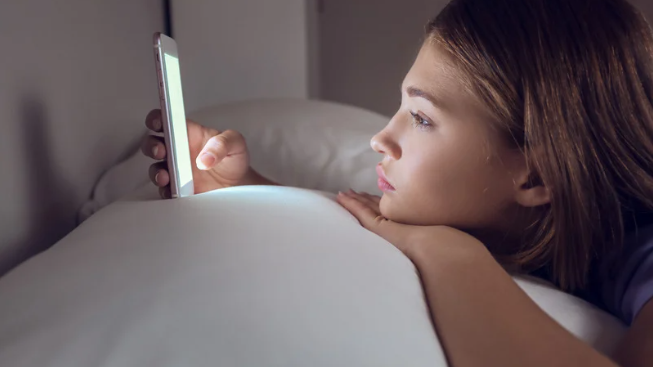It is late at night, the house is quiet, and your teen is curled up with a phone. What looks like simple scrolling is often something else entirely, a steady intake of unsettling content. Between videos on war, tragedy, and disaster, they are absorbing the weight of the world, alone, in silence.
The Emotional Toll of Doomscrolling
In recent years, doomscrolling has emerged as a troubling trend in adolescent media use. It refers to compulsively scrolling through negative or disturbing news, often late into the night. For many teens, this behavior feels automatic, triggered by curiosity, fear of missing out, or the desire to stay informed. But the effects can be significant.
A study of Indonesian adolescents found that 82.3 percent doomscrolled at least four times a week, averaging 45 minutes per session. This habit was strongly linked to increased anxiety (r = 0.62), sleep disruption (β = 0.47), and difficulty concentrating (β = 0.29). In a Turkish longitudinal study, social media addiction at one time point predicted greater doomscrolling two months later, showing how entrenched the habit can become over time.
What is particularly harmful is how doomscrolling hijacks emotional regulation. Continuous exposure to distressing content can activate the brain’s stress responses, flooding the body with cortisol and adrenaline. Over time, this leads to exhaustion, irritability, and even symptoms similar to trauma.
Signs Parents Might Miss
Teenagers are not likely to say “I have been doomscrolling too much lately.” But the signs show up in more subtle ways:
- Difficulty falling asleep or staying asleep
- Increased irritability or emotional withdrawal
- Loss of interest in hobbies or social events
- Trouble focusing on schoolwork
- Preoccupation with global crises, even when unrelated to their immediate lives
Many of these signs overlap with typical adolescent behavior, which is why it is easy for them to go unnoticed, especially when the behavior is happening behind a screen.
What Parents Can Do to Help
Rather than banning screens or adding more restrictions, the key is to open the conversation. Ask questions like:
- “What kind of content do you usually scroll through at night”
- “Does it make you feel more connected or more anxious”
These questions create space for reflection without judgment.
Supportive strategies include:
- Set gentle boundaries: Create device-free times before bed. Even a 30-minute wind-down without screens can improve sleep and reduce anxiety
- Use parental control features: Built-in tools can help monitor or limit exposure to high-risk content without being invasive. These tools can support a balanced relationship with social media rather than create tension
- Encourage content curation: Suggest unfollowing accounts that create stress and following ones that uplift, educate, or entertain
- Model digital balance: Teens are more likely to mirror what they see. If they observe adults taking breaks from the news, they will feel empowered to do the same
A Shared Path Forward
Social media and mental health in teens are deeply connected, but that does not mean technology is the enemy. The goal is not to disconnect, but to scroll with awareness, balance, and intention. By recognizing the emotional weight of what teens consume, and guiding them toward healthier habits, we can help them reclaim control over their digital lives.

